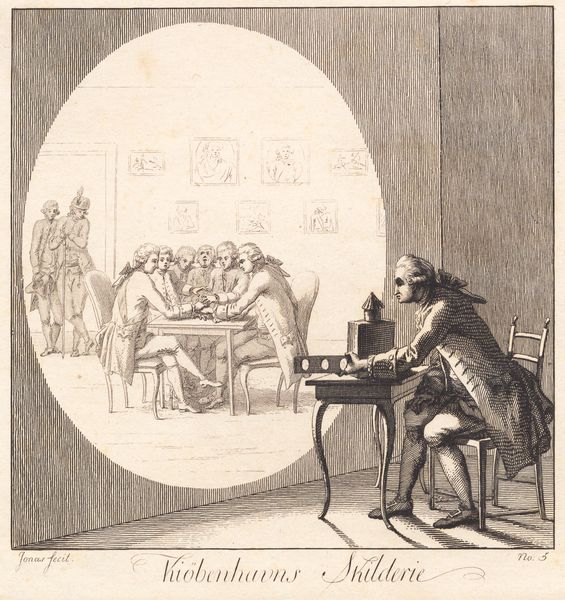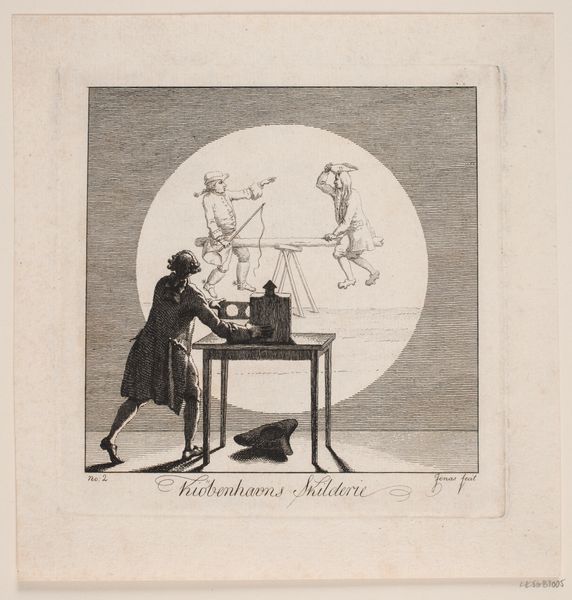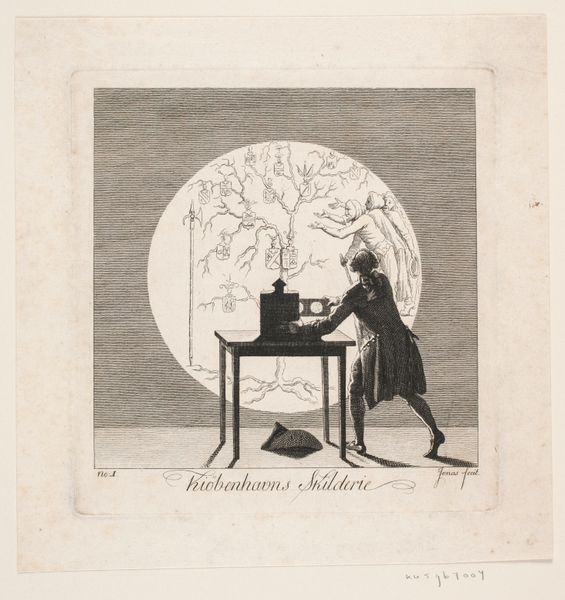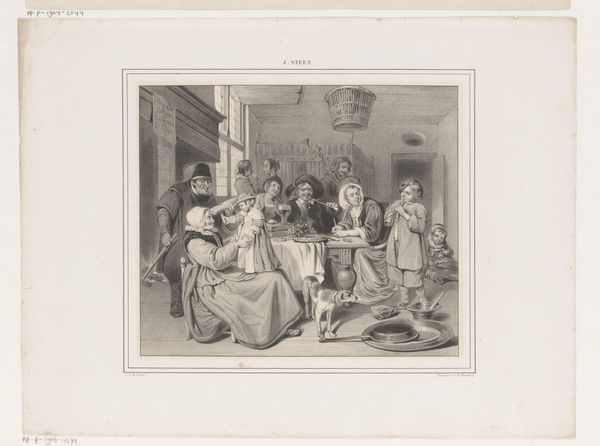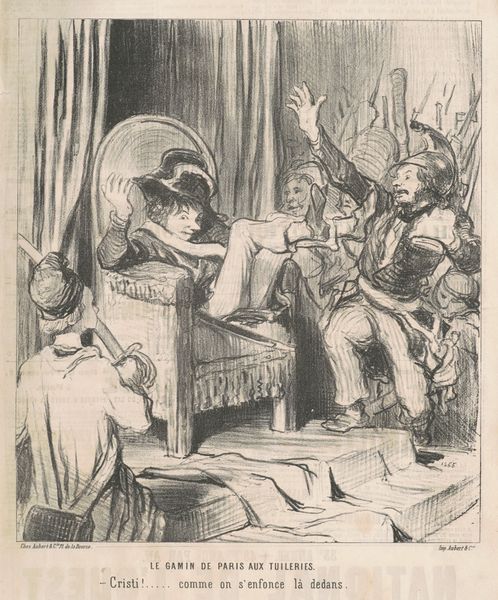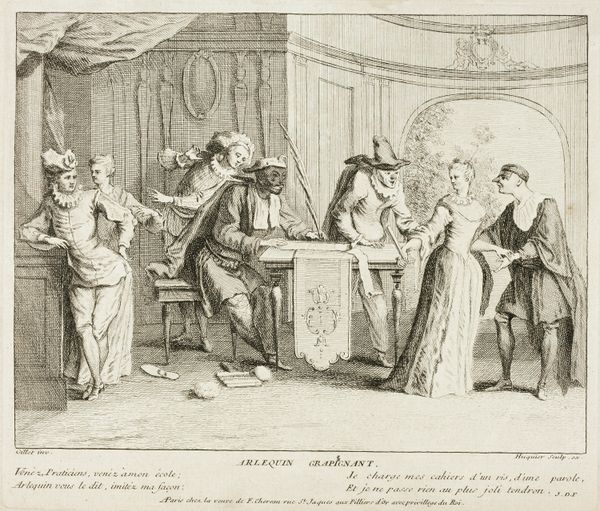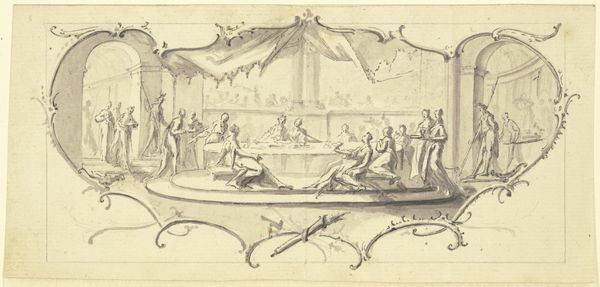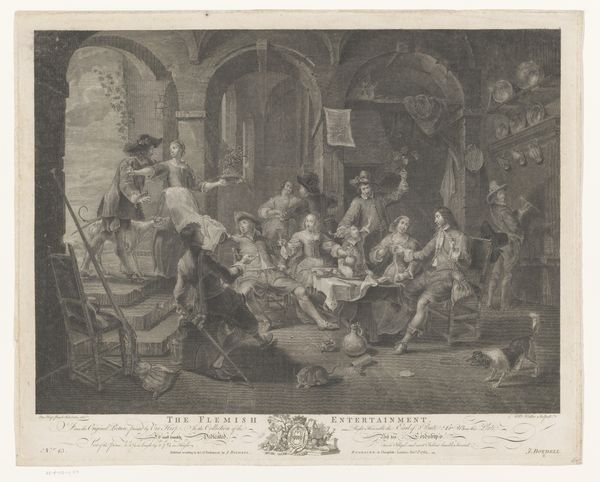
En mand med et laterna magica viser et billede af gehejmestatsrådet 1743 - 1809
0:00
0:00
Dimensions: 158 mm (height) x 153 mm (width) (bladmaal)
Editor: This is "A Man Showing an Image of the Privy Council with a Magic Lantern," created sometime between 1743 and 1809 by Nicolai Abildgaard, made with pen, ink, and watercolor. It looks like a rather theatrical scene; a man presents a magic lantern show to what seems to be a fairly well-to-do audience. What grabs your attention when you look at this piece? Curator: I see a fascinating interplay of technology, power, and social class rendered through the very material processes of drawing. Consider the artist's choice of pen, ink, and watercolor – relatively accessible and portable media – used to depict not only the spectacle of the magic lantern but also the exclusive world of the privy council. The artist seems concerned with the consumption of images. Editor: So, you're saying the choice of materials speaks to the democratization of art, or maybe the illusion of it, even as the subject matter is very elite? Curator: Precisely. Abildgaard uses the seemingly simple act of drawing to dissect the social fabric of his time. Notice how the magic lantern, a new technology at the time, is employed to represent the council. What does it mean when powerful figures are mediated and presented as images, almost like commodities for consumption? Editor: That's a really interesting way to think about it! It makes me wonder about the labor involved in producing this image, not just artistically but also socially. Was Abildgaard making a statement on the power of image-making itself? Curator: Yes! And that statement would have been received in the specific social circumstances in which it was shown and distributed. Consider the labour required to produce the ink, to make the paper; these all have an impact on our reading of it, along with the labour of the individuals shown. Abildgaard highlights that tension between accessibility through material and exclusivity through subject. Editor: It changes my understanding quite a lot when I stop seeing it just as a depiction of an event and consider how its materials, presentation, and circulation were equally important. Thanks for highlighting that! Curator: My pleasure. Looking closely at the materials helps us move past simple representations to think about the power structures embedded within art itself.
Comments
statensmuseumforkunst almost 2 years ago
⋮
The blackened back of a drawing indicates that the artist wanted to transfer the motif - or part of it - to another medium. This is a well-known, simple technique. The back of the drawing is blackened with a layer of dark rubbing colour, usually black chalk or charcoal. The outline of the motif is then traced with a blunt stylus, transferring it to the material beneath. This method of tracing is often used to make print designs. The technique is only faintly visible on the front of Abildgaard’s drawings, but on the back the blackening is obvious, and the marked outline stands out clearly. Abildgaard’s drawing with the lanterna magica was used as design for a book illustration using tracing on a metal printing plate. In the other example, the profile portrait was transferred to a piece of paper, providing the basis for a drawing.
Join the conversation
Join millions of artists and users on Artera today and experience the ultimate creative platform.
